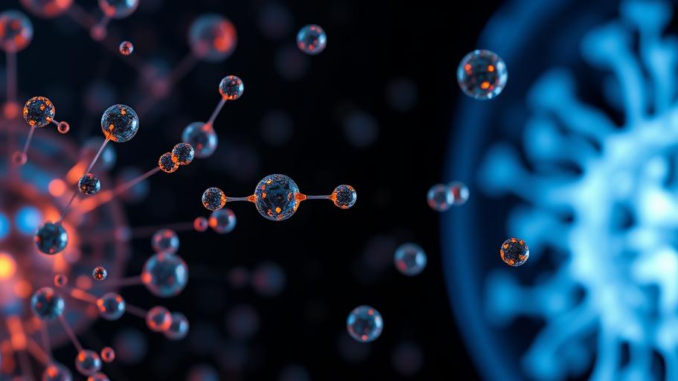
Summary
A groundbreaking imaging technique uses neutron-activated gold nanoparticles to visualize drug distribution within the body. This advance allows scientists to monitor drug delivery in real-time, potentially revolutionizing targeted therapies, especially in cancer treatment. This method overcomes limitations of current imaging technologies, offering a direct, highly sensitive, and long-term tracking solution.
Secure patient data with ease. See how TrueNAS offers self-healing data protection.
** Main Story**
Okay, so, have you heard about this new imaging technique coming out of Waseda University? It’s pretty cool – it uses gold nanoparticles to track drugs in the body, which could really change how we approach targeted therapies. Especially in cancer, you know? I mean, getting drugs exactly where they need to go has always been such a huge hurdle.
The Drug Tracking Conundrum
Think about it: we’ve been trying to track where drugs go in the body for ages. And current imaging methods? They often fall short. They’re just not sensitive enough, not precise enough, to really see where the drug is ending up. And if you can’t see where it’s going, how can you be sure it’s actually hitting the tumor and not just bouncing around causing side effects? It’s a bit like throwing darts in the dark, isn’t it? You’re hoping you’ll hit the bullseye, but you really have no idea.
Gold: Not Just for Jewelry Anymore
That’s where these gold nanoparticles (AuNPs) come in. They’re tiny gold particles, and the cool thing is, you can attach them to drug molecules. Imagine these little gold ‘breadcrumbs’ leading you right to the drug. Now, here’s the clever part: they use neutron activation to turn the gold into a radioactive isotope. This isotope then emits gamma rays, which we can detect and image. It’s like giving the gold breadcrumbs a little light so we can follow them in the dark! What this means is we can see exactly where the drug is going, in real-time. Amazing, right?
Neutron Activation: It’s Not as Scary as it Sounds
So, how does this neutron activation thing work? Well, basically, they zap the AuNPs with low-energy neutrons. No, it’s not like creating a mini-nuclear explosion! The neutrons convert the stable gold into a radioactive version that emits gamma rays. These rays are then picked up by imaging equipment, giving us a map of where the drug is moving. It’s a bit like how they use radioactive tracers in PET scans, only with gold instead. And that means a more direct approach.
The Perks of Gold Tracking
This method’s got some serious advantages, let me tell you:
- Direct Visualization: You’re seeing the gold nanoparticles directly. No need for extra tracers or contrast agents, which can sometimes interfere with the results.
- Super Sensitive: It’s incredibly sensitive, meaning you can track even tiny amounts of the drug. That’s key when you’re dealing with expensive or potent medications.
- Long-Lasting Effects: The radioactive isotope has a pretty decent half-life, so you can track the drug for a longer period. This is important for seeing how the drug distributes over time.
- Real-Time Data: And maybe the best part? You get to see the drug moving in real time. This lets you see if a drug is working dynamically. Is it reaching the tumor? Is it being metabolized too quickly? You can adjust the treatment accordingly.
The Future is Golden (Hopefully)
So, what’s next? Well, the potential here is huge. Think about personalizing cancer treatments, optimizing drug dosages based on how each patient responds. It’s a game-changer, potentially. The researchers are working on refining the technique, improving the image resolution, all with the goal of getting it into clinical practice. They’re also looking at using it with other nanoparticle-based systems. The rain lashed against the windows here as I was writing this, hopefully this gets to the clinic soon, because I can imagine how transformative this will be for patients.
And honestly? I think it’s a really promising step forward. Now, if you’ll excuse me, I need another cup of coffee – all this science is making my brain hurt!


The use of neutron activation to create a radioactive isotope for tracking is intriguing. How does the radiation exposure from this technique compare to existing methods like PET scans, and what are the long-term safety considerations for patients?